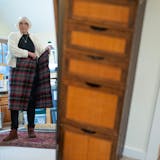Mark Ellis examines the world more closely than most people. But it's not confined to his microscopes and lab equipment as a research chemical engineer at 3M. Instead, he heads outdoors where the tool that penetrates life is his camera lens, and he likes to train it on loons.
As a 12-year-old shutterbug, Ellis took nature pictures around his grandparents' cabin at a small lake in Crow Wing County just large enough to support one breeding pair of loons. Over time, he amassed wildlife, landscape and Northern Lights images.
He is now 61, and he's spent the last 10 years focused on the life of that single loon family near the cabin. From spring arrival through autumn departure, his weekly photos document the loons' growth, training and parental dedication. It's resulted in a bond so close that they sometimes rely on him as a surrogate parent.
Ellis said he rises just before sunrise because the best lighting on the lake is generally in the early morning, particularly if accented with mist. "I'm not a morning person, but … it's just magical when you're out with that light."
Early on, he'd paddle to the loons in a canoe to prevent commotion. But he later purchased a much larger camera lens, which further motivated him to avoid capsizing. So, he bought a used, 12-foot rowboat with a small motor. He found that loons are curious and will approach boats. The relationship began.
"If I go out in a canoe now, they're not comfortable with me," he said. "But that boat and me, they know."
Ellis said he's awestruck by the dedication of loon parents. A female will usually lay two eggs. Both parents contribute to training and protecting their young. Both feed the chicks up to the absolute moment of departure in fall. However, the chicks don't travel with their parents during migration. He explained that one parent will leave first while the other remains as the chicks continue to build flying strength for the trip, some believed to be as many as 1,200 miles. Research shows loon mates typically don't winter together even though they return to the same nesting grounds.
"They'll defend their babies to the last second with their own lives, but then leave them behind. That's amazing," he said.


